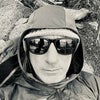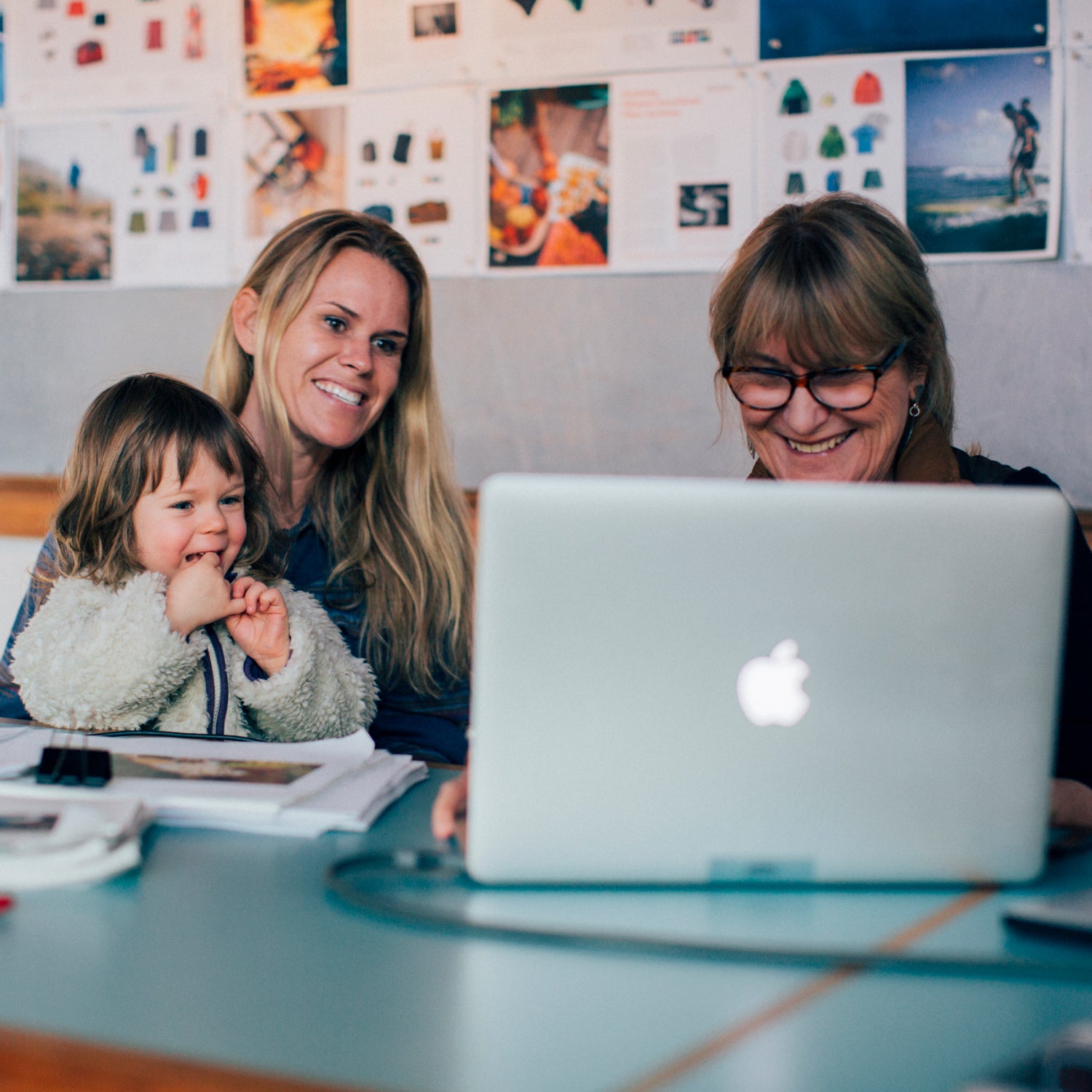Jennifer Ridgeway, PatagoniaÔÇÖs first director of advertising and the companyÔÇÖs founding director of photography, died Tuesday in her Ojai, California, home after a yearlong fight with pancreatic cancer. She was 69. She is survived by her husband, Rick, 70; her two daughters,╠řCarissa Tudor, 36, and Cameron Tambakis, 34; a son, Connor, 31; and four grandchildren.
Company employees credit Ridgeway with creating the aesthetic that would become emblematic of the Patagonia brand: her catalog images relied not on paid models╠řbut on photographs of ÔÇťreal people doing real things,ÔÇŁ as Patagonia╠řfounder╠řYvon Chouinard put it. The Patagonia catalog under RidgewayÔÇÖs direction╠řemphasized the documentary image and underplayed the product. The╠řphotos told stories, inspired, and did what they were intended to do: sell╠řclothing. But perhaps more than that, Ridgeway, through her selections, described a counternarrative to consumer culture that still managed to boost sales.╠řÔÇťShe had an eye for authenticity,ÔÇŁ says Vincent Stanley, a member of PatagoniaÔÇÖs management team for five decades and╠řcurrently the companyÔÇÖs director of philosophy, ÔÇťa real eye for beauty, and a direct, wry sense of humor.ÔÇŁ
Jennifer Dawn Fleming was born on December 30, 1949, in Jackson, Oklahoma, to J. Carl Fleming and Claudine Sneed, both schoolteachers. The family, which included her two brothers, lived for a time in Texas before settling in Portland, Oregon. Jennifer attended the╠řUniversity of Mississippi╠řand graduated with an MA in psychology from the University of Oregon. In ÔÇťCapture a Patagoniac,ÔÇŁ an autobiographical essay she wrote for an early Patagonia catalog, she described working as a model from age 12 through college and then moving to New York City╠řfor a job with Calvin Klein, where she organized╠řtrunk shows for the companyÔÇÖs high-end accounts, such as Saks Fifth Avenue and Neiman Marcus.
Traveling in Thailand for business in 1981, she missed a connecting flight in Delhi, India, and ÔÇťinspired by the Cat Stevens song,ÔÇŁ she wrote, opted to detour to╠řKathmandu, Nepal. As she told it, she booked into the upscale Hotel Yak and╠řYeti and was soon being schmoozed in the bar by a climber slash writer with a contract from National Geographic who was suddenly inviting her to join him on a three-week walkabout in╠řSagarmatha National Park, which is home to Mount Everest.
ÔÇťIÔÇÖve got wads of rupees in my expense account, and IÔÇÖll hire you an army of Sherpas. WeÔÇÖll sip R├ęmy Martin in Namche Bazaar and dine on yak steak on the Khumbu╠řGlacier,ÔÇŁ╠řthe climber said.
She demurred, saying,╠řÔÇťBut the farthest IÔÇÖve ever walked … is from a cab on Fifth Avenue into the front entrance of Bergdorf Goodman.ÔÇŁ╠ř
The climber, Rick Ridgeway, asked╠řher to visit when her business travels brought her to Southern California. Three months later, they did. The diminutive Ridgeway met her at the airport with his two equally diminutive cronies: a very soused Yvon Chouinard and the Japanese mountaineer Naoe Sakashita. ÔÇťGreat,ÔÇŁ she later wrote, as she realized that the cost of her silk gown, pearls, and five-inch heels exceeded the cost of ChouinardÔÇÖs 1969 Datsun, ÔÇťIÔÇÖm being hosted by three drunk dwarves.ÔÇŁ The beach cottage just south of the Santa Barbara community of Montecito╠řthat Ridgeway╠řhad promised to put them up in turned out to be a shack in Ventura, but in the winter of 1982, the two were married. Jennifer was mustered into Patagonia, hired by Kris Tompkins, then the╠řgeneral manager, and assigned to marketing. ÔÇťThose first few months, I was in charge of advertising, art, and PR,ÔÇŁ Jennifer recalled. ÔÇťThey even had me writing catalog copy. As soon as I could spell polypropylene, I began scheduling ad campaigns for long underwear … working with the media, running the pro-purchase program, managing catalog production, and creating a photography department.ÔÇŁ That year╠řthe company produced its second lifestyle-based catalog.
By 1986, as the company grew, Ridgeway happily ceded some of those roles to specialists, but she kept the job that gave her the most pleasure: photo director, with the help of a couple of longtime╠řemployees, including╠řKaren Bednorz (now the companyÔÇÖs historical photo archivist) and Jane Sievert (who would go on to assume RidgewayÔÇÖs role), managing a╠řcadre╠řof athlete-photographersÔÇöhundreds of themÔÇömost of whom were friends or friends of friends. Some were given clothing to put on their climbing, paddling, and fishing partners. They worked unapologetically on spec╠řor didnÔÇÖt work at all. Tens of thousands of photos rolled in the door every year, filed, as Bednorz recalls, within six boxes on a big cart the team rolled up from a vault every morning and locked up every night.
Most of them understood that, as Ridgeway wrote in 1986, ÔÇťThe goal of the photos is to sweep people away, to inspire themÔÇöto let them visualize what itÔÇÖs like to be ÔÇśout there,ÔÇÖ not stuck sitting at a desk or in front of a TV. The message is to get off your bum and get out there and do stuff.ÔÇŁ╠ř
And as more and more of them got off their bums and did stuff, so did the photographers, who learned quickly that to gain entry into the book, their images required a certain kind of brutal honesty and an unscripted je ne sais quoi.╠ř
They gleaned images now considered iconic, like the one of the mom tossing her bundled newborn across a small canyon to the waiting arms of the dad. But by employing a system that had both freelancers and any photographically inclined customer submitting photos willy-nilly, they knowingly amplified their workload. ÔÇťIÔÇÖm never going to work as hard for anyone for the rest of my life,ÔÇŁ says Sievert, who has referred to her friend as ÔÇťpart spiritual mother and part Zen master.ÔÇŁ Ridgeway hired Sievert for her climbing backgroundÔÇöthe better to understand a real climbing shot from a simulacrum of oneÔÇöand not for her photography chops, because she had none. ÔÇťI was so green, and Jennifer was so generous,ÔÇŁ Sievert says. In the early years, Sievert remembers╠řRidgeway encouraging╠řher to spend time outdoors, climbing and skiing, not only to cultivate relationships with photographers, but to hone her own athletic talents, because ÔÇťyou canÔÇÖt do it if youÔÇÖre not in it.ÔÇŁ Bednorz recalls how Ridgeway helped her sort out her personal life. ÔÇťI had a couple of relationships under my belt,ÔÇŁ says Bednorz. ÔÇťShe taught me that a healthy one was possible.ÔÇŁ
With time, Ridgeway tended to her own family and other projects, often working unseen and unheralded in the background (there are few photos of Ridgeway herself), with the same attention to detail and single-minded focus that she used to vet photo submissions. In 1985, with Malinda Chouinard, Ridgeway cofounded PatagoniaÔÇÖs on-site day-care center╠ř(a concept the two had begun rolling out two years prior),╠řeventually╠řenrolling╠řall three of her children as proof of concept (her╠řfour grandchildren currently attend), and then in 2016, again with Malinda Chouinard, she wrote to inspire other companies to do the same. In 2011,╠řSievert and Ridgeway coauthored╠ř, a book that the Banff Centre╠řhonored╠řwith its Best BookÔÇôMountain Image╠řaward.
RidgewayÔÇÖs gift, says Stanley, was cultivating╠řa portfolio of photographs in every catalog that allowed people to see themselves in the activity. ÔÇťAnd it changed the way the industry viewed sports,ÔÇŁ he says. Even more than the depictions of extreme athletes engaged in activities that many might be unable to relate to, Stanley says that Ridgeway sought to steep its customers in the wild landscapes those photos celebrated.
Ever the apprentice, Sievert sees herself as the protector of RidgewayÔÇÖs vision and her ken for finding the ultimate, authentic image. ÔÇťYou canÔÇÖt script life,ÔÇŁ Sievert says, inferring that a Patagonia photograph isnÔÇÖt scripted either. And for that matter, neither is death.
In a 2009 piece for National Geographic Traveler, ÔÇťKnocking on HeavenÔÇÖs Door,ÔÇŁ Rick Ridgeway writes╠řof a trip to PatagoniaÔÇöhis first with with Jennifer and their three children. One scene takes place at Moreno Glacier╠řin Los Glaciares National Park.
ÔÇťFrom the parking lot, we descend through a forest of stunted beech trees to a series of viewing platforms that bring us eye to eye with a wall of ice 200 feet high and three miles long. Jennifer stands transfixed, then looks at me and forms her mouth into a silent ÔÇśwow!ÔÇÖ as though saying anything aloud would be as disrespectful in this natural shrine as it would be in a man-made cathedral. But noise is something all visitors to Moreno Glacier hope to hear: The huge blocks of ice occasionally break with a gunfire crack followed by a giant splash into the lake.
ÔÇťÔÇśIÔÇÖm going to will one into breaking off,ÔÇÖ Jennifer says with a kind of New Age determinism counter to her usual cause-and-effect way of looking at the world. I keep my camera ready while she faces the glacier. An hour passes, then two. The sun sets and the air cools.
ÔÇťÔÇśI guess it doesnÔÇÖt want to break now. Maybe itÔÇÖs better this way,ÔÇÖ Jennifer says. ÔÇśNow we have more reason to return.ÔÇÖÔÇŁ


